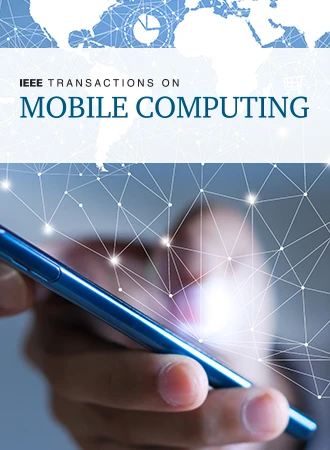通过捕捉调制振动实现由 ISAC 驱动的毫米波雷达
IF 7.7
2区 计算机科学
Q1 COMPUTER SCIENCE, INFORMATION SYSTEMS
引用次数: 0
摘要
综合传感与通信(ISAC)已成为下一代移动网络的一项前景广阔的技术。为了实现 ISAC,我们开发了 mmRipple,通过智能手机的振动使商品毫米波雷达具备通信能力。在 mmRipple 中,智能手机(发射器)通过调制智能手机振动来发送信息,而毫米波雷达(接收器)则通过检测和解码智能手机振动来接收信息。这样,智能手机用户不仅能被毫米波雷达被动感知,还能主动向雷达发送信息,而无需对硬件进行任何改动。mmRipple 虽然前景广阔,但其数据传输速率受到莫尔斯式通信的限制。为了解决这个问题,我们提出了 mmRipple+,它利用脉宽调制和调幅(PWAM)技术,抑制符号间干扰,实现更快的通信。我们在商品毫米波雷达和不同类型的智能手机上对毫米波和毫米波+进行了原型验证。实验结果表明,mmRipple 在 2 美元的通信范围内实现了 98.60% 的平均振动模式识别准确率,在 3 美元的通信范围内实现了 97.74% 的平均振动模式识别准确率,最大通信范围扩展到 5 美元。同时,mmRipple+ 实现了 100 bps 的比特率,误码率低于 3%,在符号持续时间相同的情况下,数据速率比 mmRippe 提高了 4 倍。这项工作开创了通过振动实现智能手机到 COTS 毫米波雷达通信的先河,开启了多种多样的应用。本文章由计算机程序翻译,如有差异,请以英文原文为准。
Towards ISAC-Empowered mmWave Radars by Capturing Modulated Vibrations
Integrated Sensing and Communication (ISAC) has emerged as a promising technology for next-generation mobile networks. Towards ISAC, we develop
mmRipple
that empowers commodity mmWave radars with communication capabilities through smartphone vibrations. In
mmRipple
, a smartphone (transmitter) sends messages by modulating smartphone vibrations, while a mmWave radar (receiver) receives the messages by detecting and decoding the smartphone vibrations. By doing so, a smartphone user can not only be passively sensed by a mmWave radar, but also actively send messages to the radar without any hardware modifications. Although promising, the data rate of
mmRipple
is limited by Morse-style communication. To address this, we present
mmRipple+
, which leverages the Pulse Width and Amplitude Modulation (PWAM) technique and suppresses inter-symbol interference to enable faster communication. We prototype
mmRipple
and
mmRipple+
on commodity mmWave radars and different types of smartphones. Experimental results show that
mmRipple
achieves an average vibration pattern recognition accuracy of 98.60% within a
$ 2$ $ 3$ $ 5$ mmRipple+
achieves a bit rate of 100 bps with a BER of less than 3%, improving the data rate by 4× over
mmRippe
with the same symbol duration. This work pioneers smartphone-to-COTS mmWave radar communication via vibrations, unlocking diverse applications.
求助全文
通过发布文献求助,成功后即可免费获取论文全文。
去求助
来源期刊
CiteScore
12.90
自引率
2.50%
发文量
403
审稿时长
6.6 months
期刊介绍:
IEEE Transactions on Mobile Computing addresses key technical issues related to various aspects of mobile computing. This includes (a) architectures, (b) support services, (c) algorithm/protocol design and analysis, (d) mobile environments, (e) mobile communication systems, (f) applications, and (g) emerging technologies. Topics of interest span a wide range, covering aspects like mobile networks and hosts, mobility management, multimedia, operating system support, power management, online and mobile environments, security, scalability, reliability, and emerging technologies such as wearable computers, body area networks, and wireless sensor networks. The journal serves as a comprehensive platform for advancements in mobile computing research.

 求助内容:
求助内容: 应助结果提醒方式:
应助结果提醒方式:


